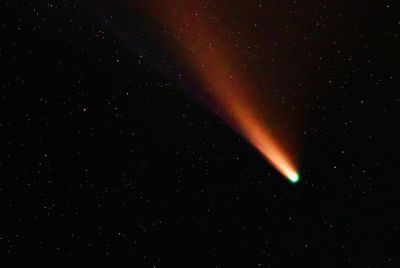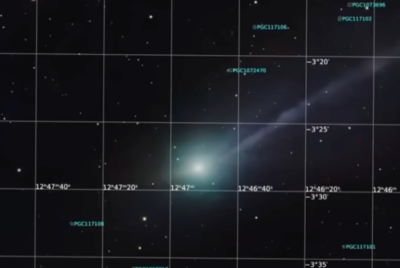Alien Invasion 2025 Could Happen This November: Countdown Starts As Strange Interstellar Objects, Mysterious Signals Appear
Astronomers detected mysterious signals adding intrigue to the 3I/ATLAS narrative

As November 2025 draws near, some scientists have ignited worldwide speculation with their analysis of the strange interstellar object 3I/ATLAS, hypothesising it could be an alien spacecraft poised for a potential hostile encounter with Earth.
Mysterious signals from space, including powerful radio bursts detected in 2025, add to the countdown, raising fears of an alien invasion amid verifiable astronomical data. While the claims remain hypothetical and unendorsed, the object's trajectory towards perihelion on 30 October 2025 has prompted a dramatic watch on its possible manoeuvres in late November.
Harvard Scientists Hypothesise Hostile Intent Behind 3I/ATLAS
Harvard professor Avi Loeb and co-authors Adam Hibberd and Adam Crowl published a paper on 17 July 2025, examining the interstellar object 3I/ATLAS, discovered on 1 July 2025 by the ATLAS telescope in Chile. The object, travelling at high speed, exhibits anomalies like a low retrograde orbital tilt of 175.11 degrees to the ecliptic, with a probability of 0.2 per cent.
They note its close approaches to Venus at 0.65 astronomical units, Mars at 0.19 astronomical units, and Jupiter at 0.36 astronomical units, with an overall probability below 0.005 per cent. The paper suggests that if artificial, 3I/ATLAS could perform a reverse Solar Oberth manoeuvre at perihelion, hidden from Earth, enabling an optimal Earth intercept in late November or early December 2025.
The authors stress this is a testable hypothesis, stating, 'This paper is contingent on a remarkable but testable hypothesis, to which the authors do not necessarily ascribe.' NASA confirms 3I/ATLAS behaves like a natural comet, passing no closer than 1.6 astronomical units to Earth.
Mysterious Signals from Space Fuel Alien Invasion Speculation This November
In 2025, astronomers detected mysterious signals adding intrigue to the 3I/ATLAS narrative. A long-dead NASA satellite, Relay 2, emitted a strong radio signal on 30 June 2025, picked up by the ASKAP telescope in Australia. Additionally, fast radio bursts were traced to distant sources, with one bright burst detected on 16 March 2025.
These align with Loeb's hypothesis that non-gravitational acceleration of 5.9 × 10−5 astronomical units per day squared could indicate intent to intercept Jupiter in November. NASA astronomer Tom Statler has noted that interstellar objects like 3I/ATLAS appear natural based on current observations.
How £16.55 Billion ($25.4 Billion) NASA Funding Monitors Interstellar Threats in 2025
NASA's 2025 budget of £16.55 billion ($25.4 billion) supports monitoring interstellar objects like 3I/ATLAS through telescopes including Hubble and Webb, which captured images on 21 July 2025 and beyond.
This funding enables planetary defence, with £5.08 billion ($7.8 billion) allocated to systems to build on the success of Artemis, potentially adaptable for threats. Global preparation includes tracking via Mars orbiters, which photographed 3I/ATLAS passing Mars on 3 October 2025.
On X, @ExxAlerts posted on 25 July 2025: 'BREAKING: Harvard astrophysicists suggest Aliens may attack Earth in NOVEMBER OF 2025 after revealing object spotted in space could very well be a "HOSTILE alien spacecraft."'.
BREAKING: 🚨 Harvard astrophysicists suggest Aliens may attack Earth in NOVEMBER OF 2025 after revealing object spotted in space could very well be a "HOSTILE alien spacecraft." pic.twitter.com/PSpg8xhPqG
— E X X ➠A L E R T S (@ExxAlerts) July 25, 2025
While sensational, such discussions highlight the need for vigilance amid real data. As October 2025 progresses, astronomers continue tracking 3I/ATLAS, noting its hyperbolic orbit confirms interstellar origins without signs of artificial propulsion. Public interest surges amid Loeb's speculations, but experts like NASA's Tom Statler emphasize natural explanations, urging calm observation.
Upcoming perihelion on 30 October offers key data, potentially debunking alien theories while advancing comet science. Vigilance remains essential for real cosmic insights.
© Copyright IBTimes 2025. All rights reserved.





















